Politics of the Sea
° 49ers 'Round The Horn ° Australia ° California (Fiction) ° Captains ° Children ° Chinese in San Francisco ° Culture of Early America ° Geneaology ° Merchants ° Passages ° Passengers ° Seaports ° San Francisco History ° Ships and Shipping ° Tales of the Sea (Fiction) ° Naval History ° Sea Politics ° Spanish in California ° Women at Sea
Books and images are also throughout the site under various topics.
Maritime History: Fiction and Non-Fiction Selections include:
| |
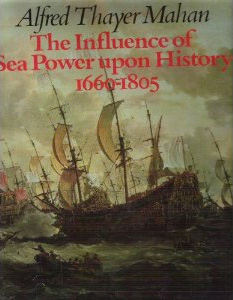 |
The World of Alfred Thayer Mahan: The Influence of Sea Power Upon History, Admiral Farragus, The Interest of America in Sea Power, The Gulf and Inland Waters
This collection was designed for eReaders and other electronic devices. All books included in this collection feature a hyperlinked table of contents and footnotes. The collection is complimented by an author biography. Table of Contents:
|
 |
How History's Greatest Pirates Pillaged, Plundered, and Got Away With It: The Stories, Techniques, and Tactics of the Most Feared Sea Rovers from 1500-1800
Benerson Little Each chapter is a stand-alone story about a famous buccaneer and follows each on a specific attack as an example of their greater techniques and tactics for plundering. The book is a recreation of the action based on historic information. |
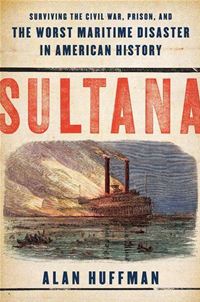 |
Sultana: Surviving the Civil War, Prison, and the Worst Maritime Disaster in American History
Alan Huffman |
 |
Berenike and the Ancient Maritime Spice Route
|
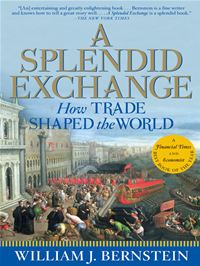
Adam Smith wrote that man has an intrinsic "propensity to truck, barter, and exchange one thing for another." But how did trade evolve to the point where we don't think twice about biting into an apple from the other side of the world? |
A Splendid Exchange: How Trade Shaped the World
William J. Bernstein Author William J. Bernstein tells the extraordinary story of global commerce from its prehistoric origins to the myriad controversies surrounding it today. He transports readers from ancient sailing ships that brought the silk trade from China to Rome in the second century to the rise and fall of the Portuguese monopoly in spices in the sixteenth; from the rush for sugar that brought the British to Jamaica in 1655 to the American trade battles of the early twentieth century; from key innovations such as steam, steel, and refrigeration to the modern era of televisions from Taiwan, lettuce from Mexico, and T-shirts from China. Bernstein examines how our age-old dependency on trade has contributed to our planet's agricultural bounty, stimulated intellectual progress, and made us both prosperous and vulnerable. Although trade often takes a backseat to war, Bernstein concludes that trade is ultimately a force for good among nations, and he proposes that societies are more successful and stable when they are involved in vigorous trade with their neighbors. A Splendid Exchange views trade and globalization not in political terms, but rather as an evolutionary process as old as war and religion; trade is the historical constant that will continue to foster the growth of intellectual capital, shrink the world, and propel the trajectory of the human species. |
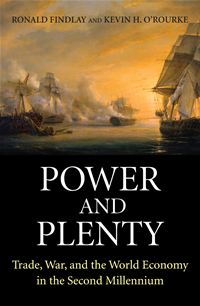
Power and Plenty is a must-read for anyone seeking to understand the origins of today's international economy the forces that continue to shape it and the economic and political challenges confronting policymakers in the twenty-first century. |
Power and Plenty: Trade, War, and the World Economy in the Second Millennium
(Princeton Economic History of the Western World) Ronald Findlay and Kevin H. O'Rourke Ronald Findlay and Kevin O'Rourke examine the successive waves of globalization and "deglobalization" that have occurred during the past thousand years looking closely at the technological and political causes behind these long-term trends. They show how the expansion and contraction of the world economy has been directly tied to the two-way interplay of trade and geopolitics and how war and peace have been critical determinants of international trade over the very long run. The story they tell links the emergence of the Western economies with economic and political developments throughout Eurasia centuries ago. Drawing extensively upon empirical evidence and informing their systematic analysis with insights from contemporary economic theory Findlay and O'Rourke demonstrate the close interrelationships of trade and warfare the mutual interdependence of the world's different regions and the crucial role these factors have played in explaining modern economic growth. |
|
The Box covers recent maritime history. However, it is relevant to world shipping merchants and how trade evolved that it is included here. By making shipping so cheap that industry could locate factories far from its customers the container paved the way for Asia to become the world's workshop and brought consumers a previously unimaginable variety of low-cost products from around the globe. |
The Box: How the Shipping Container Made the World Smaller and the World Economy Bigger
Marc Levinson In April 1956 a refitted oil tanker carried fifty-eight shipping containers from Newark to Houston. From that modest beginning container shipping developed into a huge industry that made the boom in global trade possible. The Box tells the story of the container's creation the decade of struggle before it was widely adopted and the sweeping economic consequences of the sharp fall in transportation costs that containerization brought about. Published on the fiftieth anniversary of the first container voyage this is the first comprehensive history of the shipping container. It recounts how the drive and imagination of an iconoclastic entrepreneur Malcom McLean turned containerization from an impractical idea into a massive industry that slashed the cost of transporting goods around the world and made the boom in global trade possible. The container didn't just happen. Its adoption required huge sums of money from private investors and from ports that aspired to be on the leading edge of a new technology. It required years of high-stakes bargaining with two of the titans of organized labor -- Harry Bridges and Teddy Gleason -- as well as delicate negotiations on standards that made it possible for almost any container to travel on any truck, train or ship. Ultimately it took McLean's success in supplying U.S. forces in Vietnam to persuade the world of the container's potential. Drawing on previously neglected sources economist Marc Levinson shows how the container transformed economic geography devastating traditional ports such as New York and London and fueling the growth of previously obscure ones such as Oakland, California. |
 |
Six Frigates: The Epic History of the Founding of the U.S. Navy
Maritime Annapolis (MD): A History of Watermen, Sails & Midshipmen (American Chronicles) |
Eric Jay Dolin |
|
Filibusters and Financiers: the Story of William Walker and His Associates
Bernard Bailyn gives a compelling account of the first great transit of people from Britain, Europe, and Africa to British North America, their involvements with each other, and their struggles with the indigenous peoples of the eastern seaboard. They were a mixed multitude from England, the Netherlands, the German and Italian states, France, Africa, Sweden, and Finland. They moved to the western hemisphere for different reasons, from different social backgrounds and cultures, and under different auspices and circumstances. Even the majority that came from England fit no distinct socioeconomic or cultural pattern. They came from all over the realm, from commercialized London and the southeast; from isolated farmlands in the north still close to their medieval origins; from towns in the Midlands, the south, and the west; from dales, fens, grasslands, and wolds. They represented the entire spectrum of religious communions from Counter-Reformation Catholicism to Puritan Calvinism and Quakerism. They came hoping to re-create if not to improve these diverse lifeways in a remote and, to them, barbarous environment. But their stories are mostly of confusion, failure, violence, and the loss of civility as they sought to normalize abnormal situations and recapture lost worlds. And in the process they tore apart the normalities of the people whose world they had invaded. Later generations, reading back into the past the outcomes they knew, often gentrified this passage in the peopling of British North America, but there was nothing genteel about it. Bailyn shows that it was a brutal encounter brutal not only between the Europeans and native peoples and between Europeans and Africans, but among Europeans themselves. All, in their various ways, struggled for survival with outlandish aliens, rude people, uncultured people, and felt themselves threatened with descent into squalor and savagery. In these vivid stories of individual lives some new, some familiar but rewritten with new details and contexts Bailyn gives a fresh account of the history of the British North American population in its earliest, bitterly contested years. | |
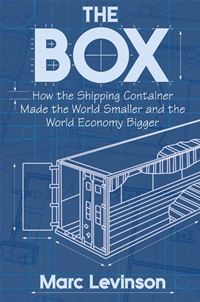



 Copyright © 1998-2017.
Copyright © 1998-2017.